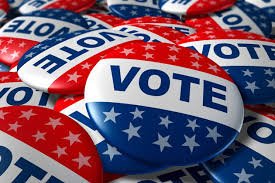Your vote matters. Click any photo to access US voter registration information.
Voting While Trans: Preparing for Voter ID LawsFrF
Regardless of whether you have ever had trouble voting in the past, this year, voter ID laws may make it harder for many trans people to vote. Even if you have the required ID, the new laws may encourage additional scrutiny toward and bias against trans voters. It is important that every trans person takes steps now to make sure they can vote on Election Day. This was written to give all trans people the information they need to be able to cast their votes and to respond to possible problems at polling places.
CHECKLIST BEFORE ELECTION DAY:
Check your voter registration status or register to vote at www.canivote.org. Verify that the name and address is up to date, and if not, make sure to update your information.
Check to see what or if any ID is required when you vote in your state by going to www.866ourvote.org/state, and then get the appropriate form of ID if needed.
If ID is needed in your state, make sure your name and address on your voter registration matches your name and address on your ID by the election. But don’t worry if your gender identity or gender presentation doesn’t match your name, photo, or gender marker, as that is not required by law.
If your state allows voting-by-mail (often called “absentee voting”), consider signing up for that through www.canivote.org. In many states, you no longer need to be traveling on Election Day to be able to vote-by-mail.
CHECKLIST FOR ELECTION DAY:
If ID is required in your state, bring it. It is also helpful to bring your voter registration card, a utility bill showing the address where you are registered, and this one-pager. You might also want to bring other IDs if you have them available.
If poll workers question your identity or eligibility to vote, show them the utility bill and the info for poll workers below.
If you are still not allowed to vote, look for a volunteer attorney at the polling place who may be there assisting voters who are being told they cannot vote. If no one is around, then call the National Election Protection Hotline at 1-866-OUR-VOTE (1-866-687-8683) for help.
If you are still not allowed to vote on a regular ballot, request a provisional ballot. If you are forced to use a provisional ballot, ask for follow-up instructions, as you generally must return to election officials within a few days to prove your identity in order for your ballot to be counted. If you cast a provisional ballot, call the National Election Protection Hotline at 1-866-OUR-VOTE (1-866-687-8683), which can help you make sure your ballot is counted.



